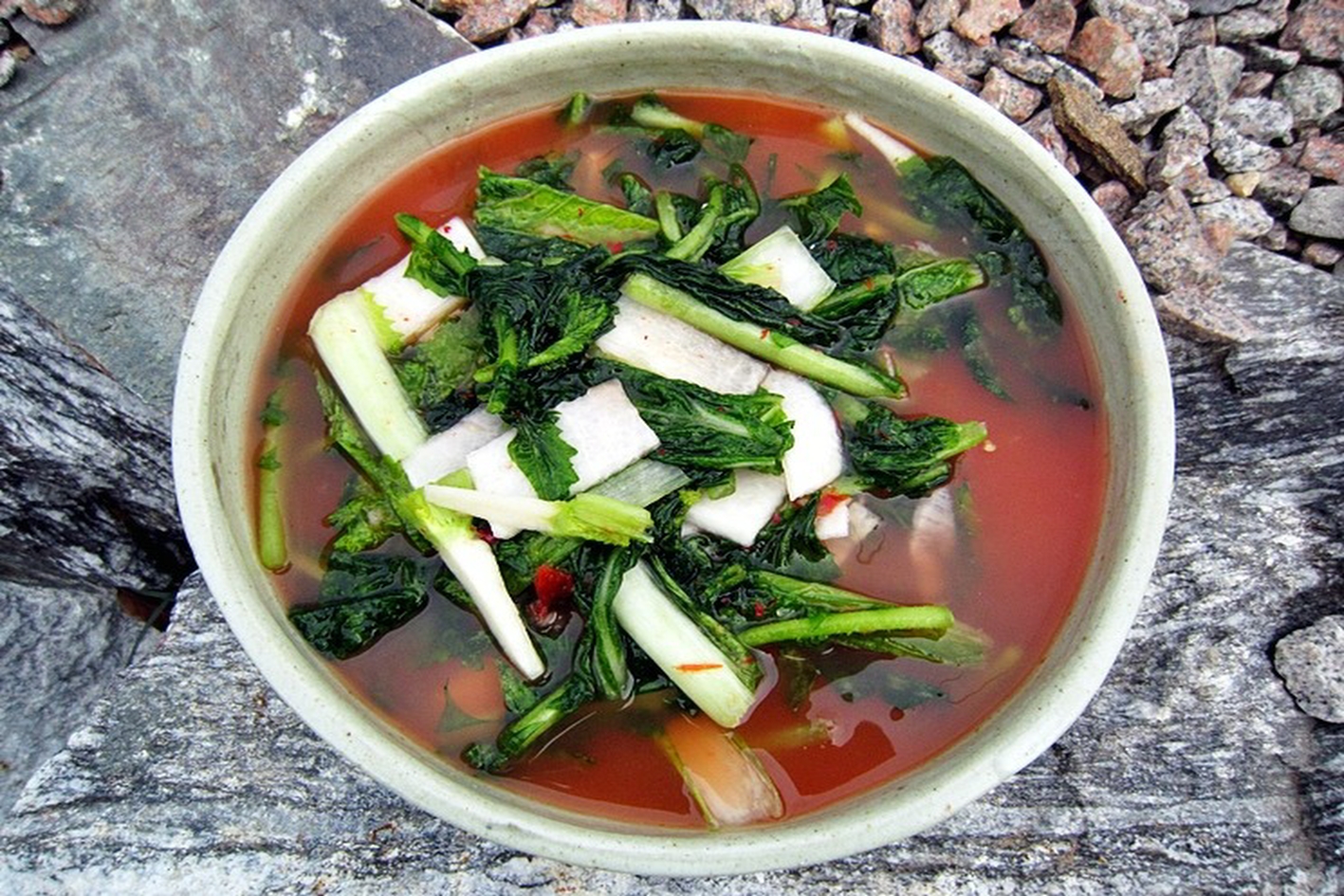
The soul of Korean cuisine
" As kimchi continues to grow in popularity, it remains a delicious reminder of the enduring power of tradition and the joy of sharing food with others "
Kimchi, a staple in Korean cuisine, is a symbol of Korea’s rich cultural heritage and a testament to the country’s deep connection with its food traditions. This fermented vegetable dish, typically made with napa cabbage and a variety of seasonings, has captured hearts and palates of people around the world. With its complex flavours, nutritional benefits, and cultural significance, kimchi is a culinary marvel that stands at the heart of Korean identity.
The dish is traditionally made by salting and fermenting vegetables, most commonly napa cabbage or Korean radishes. The process of making kimchi, known as kimjang, is both an art and a science. It begins with soaking the vegetables in salt to draw out moisture to create the right conditions for fermentation. The salted vegetables are then mixed with a spicy paste made from ingredients like red chili pepper flakes (gochugaru), garlic, ginger, scallions and fish sauce or fermented shrimp. It is then packed into jars or earthenware pots called onggi, where it ferments for days, weeks, or even months.
The fermentation process is what gives kimchi its distinctive tangy flavour and pungent aroma. As the vegetables ferment, they develop a complex, umami-rich taste both savoury and slightly sour, with a hint of spice. The longer the kimchi ferments, the more pronounced these flavours become, making every batch of kimchi unique.
Not only delicious but also packed with health benefits kimchi is rich in vitamins A, B, and C, and is an excellent source of dietary fibre. The fermentation process enhances kimchi’s nutritional profile by promoting the growth of beneficial probiotics, similar to those found in yogurt. These probiotics support digestive health by improving gut flora, boosting the immune system and aiding in the absorption of nutrients. In addition to probiotics, kimchi is loaded with antioxidants
More than just a dish in Korea; it is a cultural icon that has been passed down through generations. The tradition of kimjang, or communal kimchi-making, is a cherished part of Korean life. Every year, families and communities come together to prepare large quantities of kimchi to last through the winter months. This practice, recognized by UNESCO as an ‘Intangible Cultural Heritage of Humanity’, is a celebration of community, family and the importance of food in Korean culture.
Kimchi’s significance extends beyond Korea’s borders. As Korean cuisine gains popularity worldwide, kimchi has become a global ambassador for Korean food culture. It’s featured in dishes ranging from tacos to burgers, showcasing its versatility and wide appeal.
Having transcended its traditional roots it has become a global culinary phenomenon. Chefs around the world have embraced kimchi for its bold flavours and its ability to add a unique twist to various dishes. From kimchi fried rice and kimchi stew to kimchi pancakes and even kimchi cocktails, this humble dish has found its way into a myriad of culinary creations, highlighting its adaptability and universal appeal.
As kimchi continues to grow in popularity, it remains a delicious reminder of the enduring power of tradition and the joy of sharing food with others.
Prepared by a Chaîne News Online Staff Writer
Researched from various sources. E&OE